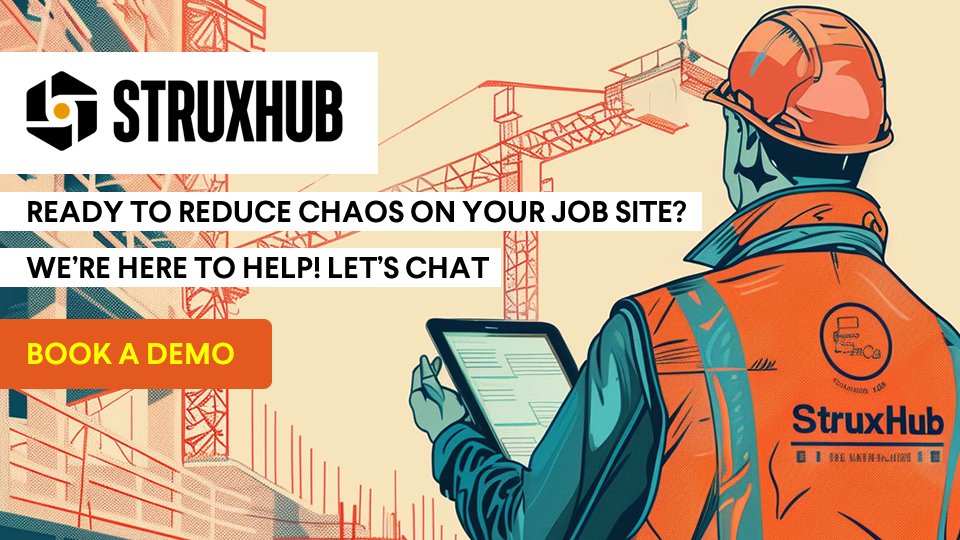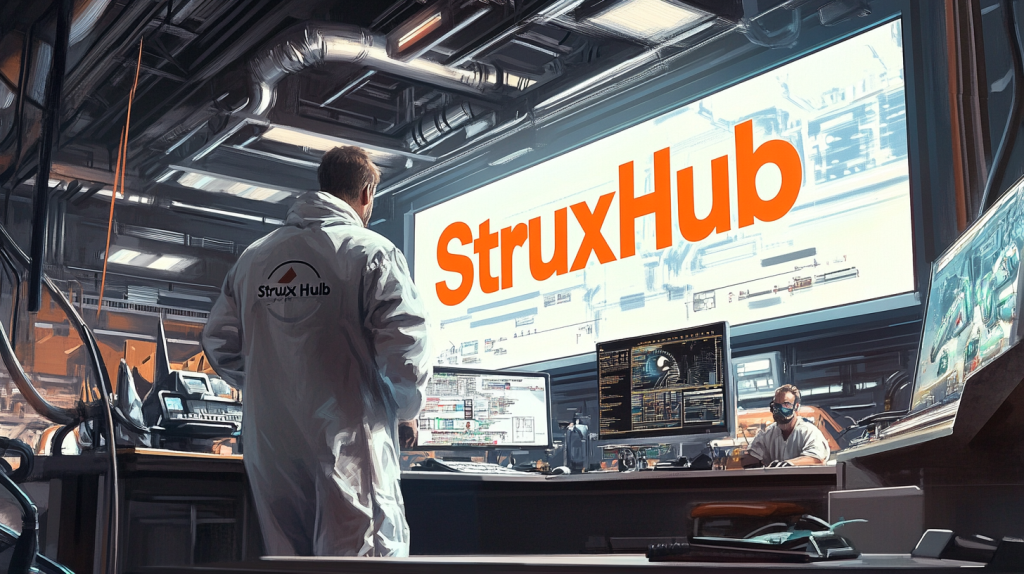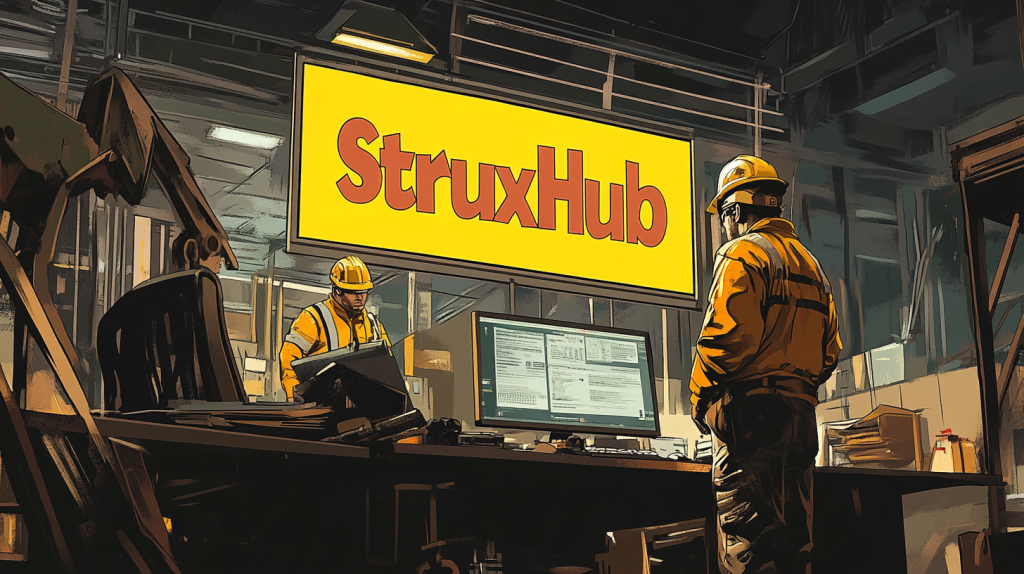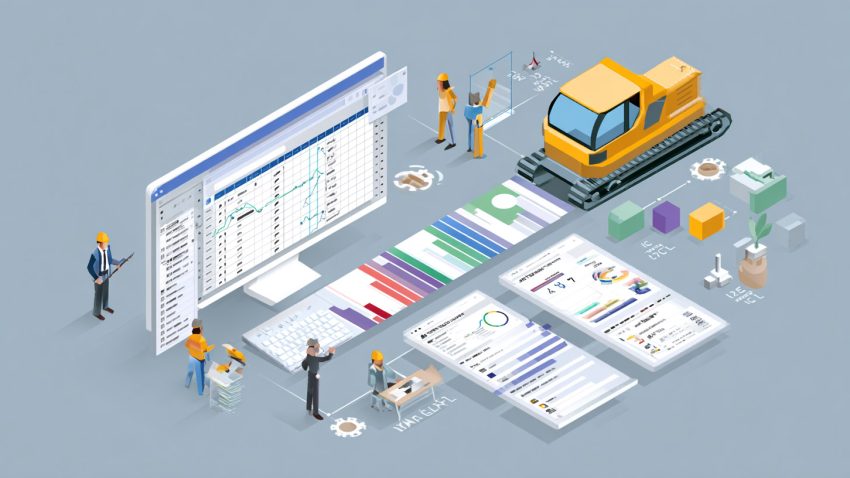Best Construction Field Management Software: How to Choose the Top Construction Field Management Software for 2025
Table of Contents:

Selecting the right construction field management software is critical for contractors, superintendents, and project managers looking to streamline job site operations, crew scheduling, equipment tracking, and compliance management. As technology continues to evolve, new trends in AI, mobile accessibility, and real-time data tracking are shaping the way construction firms manage their field operations.
With so many options available, choosing the right software solution for 2025 requires a strategic approach to ensure the platform meets your firm’s needs, integrates with existing workflows, and provides long-term value.
This guide outlines the key features, selection criteria, and best practices for choosing the best construction field management software in 2025.
1. What is Construction Field Management Software and Why Does It Matter?
Construction field management software is a digital platform that helps contractors and superintendents manage field operations more efficiently. It provides tools for real-time job site tracking, crew scheduling, material and equipment tracking, and compliance reporting, ensuring that construction teams stay organized, productive, and connected.
Key Capabilities of Construction Field Management Software
- Live Job Site Monitoring – Tracks work progress, workforce deployment, and equipment usage in real time.
- Crew Scheduling and Task Assignments – Automates shift planning and labor coordination to prevent scheduling conflicts.
- Safety and Compliance Automation – Digitizes safety inspections, incident reports, and OSHA compliance tracking.
- Mobile Accessibility – Allows field teams to update job site progress, log reports, and communicate via mobile devices.
Why It Matters in 2025
- Increased Adoption of AI & Automation – AI-powered scheduling and analytics improve efficiency and decision-making.
- Rising Demand for Cloud-Based Solutions – More construction firms are moving to cloud-based field management platforms to improve collaboration.
- Sustainability and Compliance Focus – Regulations around green construction and job site safety are making digital compliance tracking essential.
ConclusionChoosing the right field management software is key to improving efficiency, reducing errors, and staying competitive in the evolving construction landscape of 2025.

Essential Features to Look for in 2025
The best construction field management software should include features that enhance productivity, improve coordination, and provide real-time insights. In 2025, industry leaders are prioritizing AI-driven automation, mobile-first platforms, and integrated compliance tracking.
Key Features to Consider
- AI-Powered Scheduling & Workforce Management
- Automatically adjusts crew schedules based on real-time project progress.
- Uses predictive analytics to prevent labor shortages and scheduling conflicts.
- Real-Time Job Site Monitoring
- Tracks worker check-ins, equipment usage, and material deliveries.
- Provides GPS and RFID tracking for better asset management.
- Mobile and Cloud-Based Accessibility
- Enables superintendents and crews to log updates, report incidents, and access project plans on mobile devices.
- Ensures all stakeholders have instant access to real-time project data.
- Integration with BIM and Digital Twin Technology
- Syncs field operations with Building Information Modeling (BIM) platforms.
- Uses digital twins for real-time project visualization and predictive maintenance.
- Automated Safety & Compliance Tracking
- Generates digital safety checklists and incident reports.
- Ensures compliance with OSHA, local safety laws, and sustainability standards.
The best software solutions in 2025 will offer AI-driven automation, mobile integration, and advanced compliance tracking, ensuring construction firms stay efficient and competitive.
How to Evaluate and Compare Software Options
With numerous field management software solutions available, it’s crucial to compare features, pricing, and usability before making a decision.
Key Criteria for Evaluation
- Ease of Use & Adoption
- Ensure the software is user-friendly and easy for field teams to adopt.
- Look for platforms that offer intuitive dashboards and mobile-friendly interfaces.
- Customization & Scalability
- Choose software that can be customized to fit your workflows.
- Ensure it scales with your company’s growth and can handle multiple projects simultaneously.
- Integration with Existing Tools
- The software should integrate with BIM software, project management tools (Procore, Autodesk Build), and accounting systems.
- Customer Support & Training
- Look for software vendors that provide training programs, customer support, and implementation assistance.
By carefully evaluating software options, construction firms can choose a platform that enhances productivity, streamlines communication, and aligns with future technology trends.

Best Construction Field Management Software Solutions for 2025
With the increasing demand for efficiency, automation, and real-time data access, construction firms need software that streamlines scheduling, workforce tracking, compliance, and reporting. The right construction field management software can reduce miscommunication, prevent costly delays, and enhance job site coordination.
Top 3 Construction Field Management Software for 2025
- StruxHub – A powerful solution for real-time workforce scheduling, job site logistics, and compliance tracking. StruxHub is designed to help superintendents and contractors manage field operations efficiently, reducing delays and improving job site coordination.
- Procore – A cloud-based platform for construction project management, document sharing, and workflow automation.
- Autodesk Build – Integrates BIM modeling with construction field operations, allowing seamless design-to-execution coordination.
Why StruxHub Stands Out
StruxHub offers a comprehensive solution tailored for job site operations, making it a top choice for construction firms looking to improve field management in 2025. Key benefits include:
- Dynamic Workforce Scheduling – Automates crew assignments, shift planning, and workforce adjustments based on project needs.
- Material and Equipment Logistics – Helps track deliveries, reduce material waste, and ensure resources are in the right place at the right time.
- Compliance and Safety Monitoring – Digitizes safety checklists, compliance reports, and incident tracking, making it easier to meet OSHA and regulatory requirements.
Best Practices
- Choose cloud-based software like StruxHub for real-time collaboration and project tracking.
- Integrate BIM and workforce management to enhance efficiency.
- Ensure the software offers mobile access for superintendents and field teams.
Selecting the right construction field management software depends on the needs of your project and workforce. StruxHub is an excellent choice for contractors and superintendents looking to optimize scheduling, improve logistics, and enhance safety compliance in 2025.
Related Articles:
The Construction Site Coordination Platform Built for Field Teams: StruxHub
AI, Automation, and the Future of Construction Field Management
Artificial intelligence (AI) and automation are revolutionizing construction field management, helping firms reduce inefficiencies, improve scheduling accuracy, and enhance project oversight. In 2025, AI-driven predictive analytics, automated workflows, and digital twin technology will be essential for optimizing job site operations.
How AI is Changing Construction Field Management
- AI-Powered Scheduling Adjustments
- AI helps superintendents anticipate delays by analyzing weather patterns, workforce productivity, and supply chain data.
- Automated scheduling tools like StruxHub adjust crew assignments in real time, ensuring tasks stay on track.
- Predictive Maintenance and Equipment Tracking
- AI-powered software monitors heavy equipment usage and schedules maintenance before breakdowns occur.
- StruxHub integrated logistics tracking to ensure materials and equipment arrive on-site at the right time.
- Digital Twin Technology for Real-Time Job Site Monitoring
- Digital twins create a real-time virtual replica of the construction site, allowing managers to detect and resolve potential issues before they impact project timelines.
Why AI-Driven Platforms Like StruxHub are the Future
StruxHub leverages automation and AI-driven analytics to provide:
- Smart scheduling that adjusts crew shifts based on labor availability and job site conditions.
- Automated compliance tracking to ensure all safety requirements are met without manual reporting.
- AI-based material forecasting to prevent over-ordering and supply chain delays.
Best Practices
- Use AI-powered scheduling to predict and prevent workforce bottlenecks.
- Integrate logistics tracking to ensure materials and equipment are used efficiently.
- Adopt AI-based safety monitoring tools for proactive risk management.
As AI and automation continue to evolve, StruxHub and similar AI-driven platforms will play a crucial role in optimizing workforce coordination, reducing risks, and improving overall field management efficiency.

Common Mistakes to Avoid When Choosing Field Management Software
Selecting the wrong field management software can lead to integration issues, poor adoption rates, and inefficiencies. To ensure a successful implementation, construction firms must avoid common mistakes when selecting their platform.
Common Pitfalls and How to Avoid Them
- Choosing Software Without Real-Time Capabilities
- Many field management platforms lack real-time updates, forcing superintendents to rely on delayed reports and outdated job site data.
- Solution: Choose a cloud-based platform like StruxHub that provides instant job site updates and real-time tracking.
- Failing to Consider Workforce Adoption
- A powerful tool is useless if field crews and superintendents don’t use it.
- Solution: Opt for user-friendly software with mobile access and an intuitive interface, ensuring easy adoption by field teams.
- Ignoring Integration with Other Construction Software
- If the software doesn’t integrate with BIM, project management tools, or accounting systems, workflows become fragmented and inefficient.
- Solution: Choose a solution like StruxHub, which integrates with Procore, Autodesk Build, and Oracle Primavera.
- Overlooking Customization and Scalability
- Some platforms lack the flexibility to adapt to different project sizes and workflows.
- Solution: Select scalable software that grows with your business needs and supports complex, multi-phase projects.
- Not Prioritizing Compliance and Safety Automation
- Many firms neglect compliance tracking, leading to OSHA violations and project shutdowns.
- Solution: Use software with built-in safety reporting and compliance automation like StruxHub.
Best Practices
- Choose a mobile-friendly solution to keep teams connected in the field.
- Select a platform that integrates with BIM, scheduling, and safety management tools.
- Test software through a pilot project before full implementation.
Avoiding these common mistakes ensures that your field management software investment provides long-term value. StruxHub offers an all-in-one solution for scheduling, logistics, and compliance, making it the top choice for construction firms in 2025.
Related Articles:
Best Guide to Construction Management Software
The Best Guide to Delivery Management Systems (DMS) for Commercial Construction
Unlock the Full Potential of Your Construction Projects with StruxHub
StruxHub enhances efficiency and coordination across all project phases, providing a single source of truth that eliminates silos and fosters collaboration. Real-time updates, financial management tools, and seamless commvunication features ensure that all team members and stakeholders are aligned and informed, reducing the risk of errors and delays. With comprehensive solutions for document management, risk mitigation, and quality control, StruxHub maintains project integrity and safety, while mobile access and integration capabilities further enhance project flexibility and efficiency.
StruxHub’s Key Features and Benefits:
- Advanced Delivery Management: Automate and optimize your delivery schedules, ensuring materials arrive just in time, every time.
- Site Communication: Utilize georeferenced maps and instant messaging to keep every team member informed and aligned.
- Construction Materials Management: Track inventory levels and manage materials procurement with ease, reducing waste and avoiding project delays.
- Construction Safety & Inspection Workflows: Implement customizable mobile forms for conducting safety inspections and managing compliance documentation effortlessly.
- Short-Term Scheduling: Visualize project tasks with detailed floor plans, linking each activity to specific locations for better planning accuracy.
- Construction Resource Management: Efficiently allocate personnel and equipment, maximizing productivity and reducing idle time.
StruxHub’s Product Offering:
- StruxHub Deliveries: Simplifies the coordination of incoming deliveries, ensuring materials and equipment are precisely timed to project needs.
- StruxHub Logistics: Offers intelligent site logistics planning, from crane scheduling to space allocation, for smoother operations.
- StruxHub Safety: Elevates on-site safety standards with easy-to-use tools for inspections, permits, and incident reporting.
- StruxHub Scheduling: Enhances project timelines with intuitive scheduling tools that ensure tasks are completed efficiently and on time.
With StruxHub, construction companies can look forward to a streamlined, more efficient project execution that delivers on time and within budget. Embrace the power of innovation and take your construction projects to the next level.
Don’t miss out on the opportunity to optimize your construction management processes with StruxHub. Sign up for a free demo today. Let’s build smarter, together.
FAQ

StruxHub
Experience the power of StruxHub today and witness firsthand how it can revolutionize your construction operations.
How does construction field management software improve job site efficiency?
Construction field management software is designed to streamline job site operations, ensuring that superintendents, contractors, and field teams can work more efficiently. It replaces manual processes, outdated spreadsheets, and paper-based reporting with real-time tracking, automated scheduling, and mobile collaboration tools.
1. Improves Workforce Coordination
One of the biggest time-wasters in construction is crew mismanagement. Without a centralized scheduling system, teams often face overlapping shifts, scheduling conflicts, or gaps in labor availability. Construction field management software like StruxHub automates scheduling, ensuring that:
- Crews are assigned based on availability, skill level, and project needs.
- Shift changes and job updates are communicated in real time.
- Project managers can adjust workforce allocation dynamically to prevent downtime.
2. Enhances Real-Time Communication
Many project delays occur due to miscommunication between field and office teams. A cloud-based field management platform allows:
- Instant messaging and live notifications to update teams about schedule changes.
- Mobile access to project documents, blueprints, and safety reports.
- Centralized tracking of job site progress, reducing the need for time-consuming status meetings.
3. Reduces Rework and Errors
Errors and rework account for a significant portion of budget overruns in construction. Field management software:
- Detects scheduling conflicts and resource shortages before they happen.
- Ensures crews work with the most up-to-date project plans and safety protocols.
- Uses AI-driven insights to prevent common construction inefficiencies.
By digitizing scheduling, job site tracking, and crew coordination, construction field management software optimizes job site efficiency, reduces costly delays, and improves communication between teams.
What are the most important features to look for in 2025 construction field management software?
As construction firms embrace automation, AI, and mobile-first technology, selecting the right field management software requires identifying the most valuable features for job site efficiency.
1. AI-Powered Scheduling and Workforce Management
- Automatically adjusts crew schedules based on real-time project needs.
- Uses predictive analytics to prevent labor shortages.
- Assigns tasks dynamically based on worker skill levels and availability.
2. Cloud-Based Job Site Collaboration
- Provides mobile access for superintendents, contractors, and field crews.
- Allows real-time updates to schedules, material deliveries, and safety reports.
- Reduces paperwork and ensures all teams work with the latest data.
3. Equipment and Material Tracking
- Uses RFID and GPS tracking to monitor heavy machinery, tools, and inventory.
- Prevents project delays caused by missing or underutilized assets.
4. Compliance and Safety Management
- Generates automated safety reports, incident logs, and OSHA compliance checklists.
- Sends alerts for upcoming inspections and required certifications.
5. Integration with BIM and Project Management Software
- Connects with BIM platforms like Autodesk Build for real-time model updates.
- Integrates with Procore, Oracle Primavera, and accounting tools for a seamless workflow.
The best construction field management software in 2025 will leverage AI, automation, and mobile accessibility to improve scheduling, tracking, and compliance, ensuring smarter and more efficient job site operations.
What are the benefits of using AI and automation in construction field management?
AI and automation are transforming construction field management by eliminating manual scheduling errors, optimizing workforce allocation, and reducing delays.
1. Predictive Scheduling for Workforce Management
AI-powered scheduling tools, such as StruxHub, analyze historical project data, weather conditions, and labor availability to:
- Optimize crew schedules dynamically based on real-time site conditions.
- Prevent overstaffing or underutilization of workers, reducing labor costs.
2. AI-Based Equipment and Material Logistics
Construction delays often occur due to missing materials and inefficient equipment allocation. AI improves:
- Inventory forecasting to ensure materials arrive on time.
- Predictive maintenance for machinery, preventing unexpected breakdowns.
- Smart logistics planning to optimize deliveries and storage.
3. Automated Compliance and Safety Reporting
Automation simplifies safety and compliance tracking by:
- Digitizing safety checklists and incident reports.
- Sending real-time alerts for upcoming safety inspections.
- Ensuring workers have updated certifications before operating equipment.
By leveraging AI and automation, construction field management software reduces human error, enhances efficiency, and ensures that projects stay on schedule with minimal delays.
How can construction firms integrate field management software with existing tools?
For construction firms to maximize efficiency, field management software must seamlessly integrate with existing platforms, including project management, accounting, and BIM software.
1. Integration with Project Management Software
- StruxHub and similar solutions sync with Procore, Autodesk Build, and Oracle Primavera, ensuring real-time updates between field and office teams.
- Field updates, task completions, and workforce schedules are automatically reflected in project timelines.
2. Accounting and Payroll Integration
- Allows firms to track labor hours, process payroll, and manage project budgets efficiently.
- Prevents discrepancies between field reports and financial records.
3. BIM Integration for Real-Time Construction Modeling
- Enables superintendents to view updated 3D models directly from the job site.
- Reduces errors by ensuring crews work with the most current project drawings.
4. Compliance and Safety Systems
- Automates OSHA reporting and safety checklists.
- Integrates with incident tracking software to maintain regulatory compliance.
Construction firms should choose field management software that integrates seamlessly with existing project tools, ensuring a smooth workflow across departments and job sites.
What is the best way to train teams on new construction field management software?
Adopting new construction field management software requires a structured training process to ensure successful implementation and high user adoption rates.
1. Start with a Pilot Project
- Test the software on a smaller project first before rolling it out company-wide.
- Gather feedback from superintendents, foremen, and field crews.
2. Provide Hands-On Training Sessions
- Offer in-person or virtual training focused on real-world job site scenarios.
- Train teams on mobile features, scheduling, compliance reporting, and job tracking.
3. Assign Software Champions
- Designate superintendents or project managers as go-to experts to assist field teams.
- Ensure there’s a dedicated support system to address software-related questions.
4. Use Vendor Support and Online Resources
- StruxHub and other platforms offer webinars, knowledge bases, and customer support teams.
- Encourage teams to use live chat or helpdesk services for troubleshooting.
5. Monitor Adoption and Optimize Workflows
- Track software adoption rates and identify areas where teams need additional training.
- Adjust workflows based on feedback and performance metrics.
Effective training ensures that field teams embrace new technology, leading to higher efficiency, reduced errors, and better collaboration on job sites.




